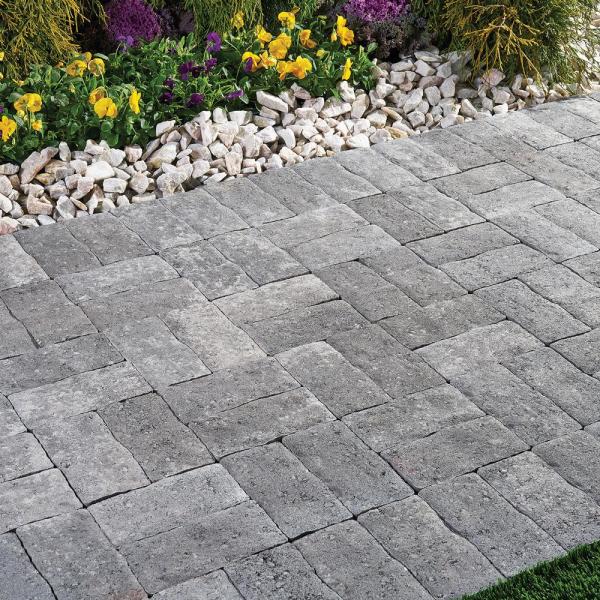Paver Maintenance & Sealer Questions
Your Paver Maintenance Questions Answered…
You take pride in your beautiful home. You have created beautiful living spaces inside and outside. When you have a home exterior with beautiful paver stones lining your driveway, walkways or patios or all of these, you want to make sure they stay pristine.
Pavers are a great investment and last a long time. Occasionally, they can require repair and it should be taken care of. Additionally, you should proactively maintain them to protect your investment and keep your home exterior looking pristine for a very long time.
Here are answers to some questions about paver maintenance that customers often ask us.

How long does paver restoration take?
As part of the complete paver maintenance / restoration process, the pavers are cleaned of dirt, grime, and debris. Additionally, a small amount of sand between the pavers is cleaned. Afterwards, PatioPaverPros will seal the pavers after replacing the old sand. Your pavers may require less maintenance depending on their condition. Depending on the options chosen by the customer, paver restoration may take two days. We may discuss sanding and sealing in more detail below, but if we’re using traditional sand and no sealant, the process can be completed in a single day. Regardless of sealant requests, the polymeric sand process is two days regardless of whether a request is made for sealing. Weather conditions dictate the time frame for paver re-sanding and seal-coating as well, which can extend the process by up to a week.
When should pavers be resanded?
By pressure washing pavers, fine sand is removed from between paver joints, stabilizing the pavers and keeping them from moving. Resanding entails replacing the previously displaced sand in the joints with new, clean sand. Resandable materials include traditional and polymeric sand. The best results are typically achieved with traditional sand.
Why do PatioPaverPros recommend traditional sand?
The traditional sand, also known as “general purpose” or “jointing sand,” produces the best results when resanding. The granular sand is nothing special, but compared with polymeric sands, which are often incorrectly used in resanding, it works much better.
Why do PatioPaverPros not recommend polymeric sands?
Polymeric, or stabilizing sand, is often used incorrectly, as it contains special polymers which, when hydrated correctly, cause the sand to harden, or lock in place, by binding together. It is not designed, nor recommended, to be applied to projects where pavers were not first installed with polymeric sand. This process works wonderfully on initial (new) paver installations. This is a result of the fact that sand can rarely be removed more than 12 to 34% of an inch from between paving stones, causing problems when the thickness of most pavers is just over two inches.
The disadvantage of polymeric sand is that it cannot be used to re-sand a paver with a depth that is greater than traditional sand. It is recommended to not use polymeric sand except for new installations. If you don’t work with PatioPaverPros, beware of working with contractors who ignore these recommendations against polymeric resanding.
There will always be movement in your paver structure, regardless of the type of sand (settling, edge problems, etc.). A sealing agent, locking agent, or sand cannot last forever or will not crack with time.
What is the purpose of sealing pavers?
A sealant protects masonry against the elements (rain, sun, etc.). It also helps protect against foreign objects falling onto it. When pavers are sealed, they become a protective barrier that repels water while preserving their natural beauty. Although sealing does not stop ants from coming up through the joints in pavers, it has been known to keep weeds down, though not completely eliminate them.
What kinds of paver sealers are suitable?
Finishes can be oil-based or water-based when sealing pavers. PatioPaverPros does not recommend oil-based finishes with the paver sealer wet look. Adding even a trace amount of moisture or water to a wet look sealer will produce a white haze on the pavers, which is not easy to remove and, in some cases, may require you to replace the pavers. Water-based paver sealers cannot be mixed with oil-based sealers due to their different solvents. You should, however, reapply your oil-based sealer if the pavers have previously been sealed with oil.
What are the advantages of natural-look sealing over water-base sealing?
Pavers sealed with these sealers have a matte finish with a light sheen. In addition to looking better, the natural-look sealer contains polymers that act as a joint stabilizer, so the sand joints will harden similarly to polymeric sand. Moreover, a water-base joint stabilizer sealer can be applied to damp surfaces and joints, in contrast to an oil-based sealer. PatioPaverPros recommends water-based sealants over other types of paver sealer products for brick paving because of all the reasons listed above.
Is it necessary to seal pavers regularly?
With typical weather and traffic conditions, when a good sealing job is done correctly, with good products, it should last between 2 and 3 years. Paver maintenance for driveways in extreme weather and traffic/usage will require re-sealing more often.
If you are going to install brick pavers outside of your home, you will want to take care of them just as you would any other exterior feature. PatioPaverPros recommends a maximum of 3-4 sealer applications every 15-20 years.

